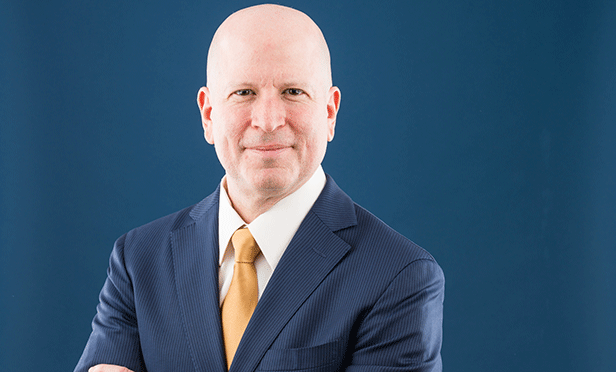IRVINE, CA—CoreLogic, a leading global property information, analytics and data-enabled services provider, recently released new analysis showing 254,000 properties regained equity in the first quarter of 2015.
That brings the total number of mortgaged residential properties with equity at the end of Q1 2015 to approximately 44.9 million, or 90% of all mortgaged properties. Nationwide, borrower equity increased year over year by $694 billion in Q1 2015. The total number of mortgaged residential properties with negative equity is now at 5.1 million, or 10.2% of all mortgaged properties. This compares to 5.4 million homes, or 10.8%, that had negative equity in Q4 2014, a quarter-over-quarter decrease of 4.7%. Compared with 6.3 million homes, or 12.9%, reported for Q1 2014, the number of underwater homes has decreased year over year by 1.2 million, or 19.4%.
“The CoreLogic Home Price Index for the U.S. was up 2.5% during the first quarter of 2015, which has improved the equity position of homeowners,” said Frank Nothaft, chief economist for Irvine-based firm. “About 90% of homeowners now have housing equity and, as a result, have experienced an increase in wealth, which can spur additional consumption and investment expenditures. The remaining 10% of owners with negative equity will find their home value rising while they continue to pay down principal on their amortizing mortgage loan.”
“Many homeowners are emerging from the negative equity trap, which bodes well for a continued recovery in the housing market,” said Anand Nallathambi, president and CEO of CoreLogic. “With the economy improving and homeowners building equity, albeit slowly, the potential exists for an increase in housing stock available for sale, which would ease the current imbalance in supply and demand. There are still about 5 million homeowners who are underwater and we estimate that a further 5% appreciation in home values across the U.S. would reduce the number of owners with negative equity by about one million.”
Negative equity, often referred to as “underwater” or “upside down,” refers to borrowers who owe more on their mortgages than their homes are worth. Negative equity can occur because of a decline in value, an increase in mortgage debt or a combination of both.
For the homes in negative equity status, the national aggregate value of negative equity was $337.4 billion at the end of Q1 2015, falling approximately $11.7 billion from $349.1 billion in Q4 2014. On a year-over-year basis, the value of negative equity declined overall from $388 billion in Q1 2014, representing a decrease of 13% in 12 months.
Of the more than 50 million residential properties with a mortgage, approximately 9.7 million, or 19.4%, have less than 20% equity (referred to as “under-equitied”), and 1.3 million, or 2.7%, have less than 5% equity (referred to as near-negative equity). Borrowers who are “under-equitied” may have a more difficult time refinancing their existing homes or obtaining new financing to sell and buy another home due to underwriting constraints. Borrowers with near-negative equity are considered at risk of moving into negative equity if home prices fall.
Highlights as of Q1 2015:
-
Nevada had the highest percentage of mortgaged residential properties in negative equity at 23.1 percent, followed by Florida (21.2%), Illinois (16.8%), Arizona (16.8%) and Rhode Island (15.7 %). Combined, these five states accounted for 31.4% of negative equity in the U.S.
-
Texas had the highest percentage of mortgaged residential properties in positive equity at 97.7 percent, followed by Hawaii (96.9%), Alaska (96.8%), Montana (96.8%) and North Dakota (96.2%).
-
Of the 25 largest Core Based Statistical Areas (CBSAs) based on mortgage count, Tampa-St. Petersburg-Clearwater, FL. had the highest percentage of mortgaged residential properties in negative equity at 23.1%, followed by Chicago-Naperville-Arlington Heights, IL. (19.1%), Phoenix-Mesa-Scottsdale, AZ. (16.9 percent), Riverside-San Bernardino-Ontario, CA. (13.9%) and Warren-Troy-Farmington Hills, MI. (13.4%).
-
Of the same largest 25 CBSAs, Houston-The Woodlands-Sugar Land, TX had the highest percentage of mortgaged properties with positive equity at 97.9 percent, followed by Dallas-Plano-Irving, TX (97.6%), Denver-Aurora-Lakewood, CO. (97.1%), Portland-Vancouver-Hillsboro, OR-WA. (97%) and Anaheim-Santa Ana-Irvine, CA. (97%).
|-
Approximately 3.1 million underwater borrowers hold first liens without home equity loans. The average mortgage balance for this group of borrowers is $229,000. The average underwater amount is $58,000.
-
Want to continue reading?
Become a Free ALM Digital Reader.
Once you are an ALM Digital Member, you’ll receive:
- Breaking commercial real estate news and analysis, on-site and via our newsletters and custom alerts
- Educational webcasts, white papers, and ebooks from industry thought leaders
- Critical coverage of the property casualty insurance and financial advisory markets on our other ALM sites, PropertyCasualty360 and ThinkAdvisor
Already have an account? Sign In Now
*May exclude premium content© 2024 ALM Global, LLC, All Rights Reserved. Request academic re-use from www.copyright.com. All other uses, submit a request to [email protected]. For more information visit Asset & Logo Licensing.








